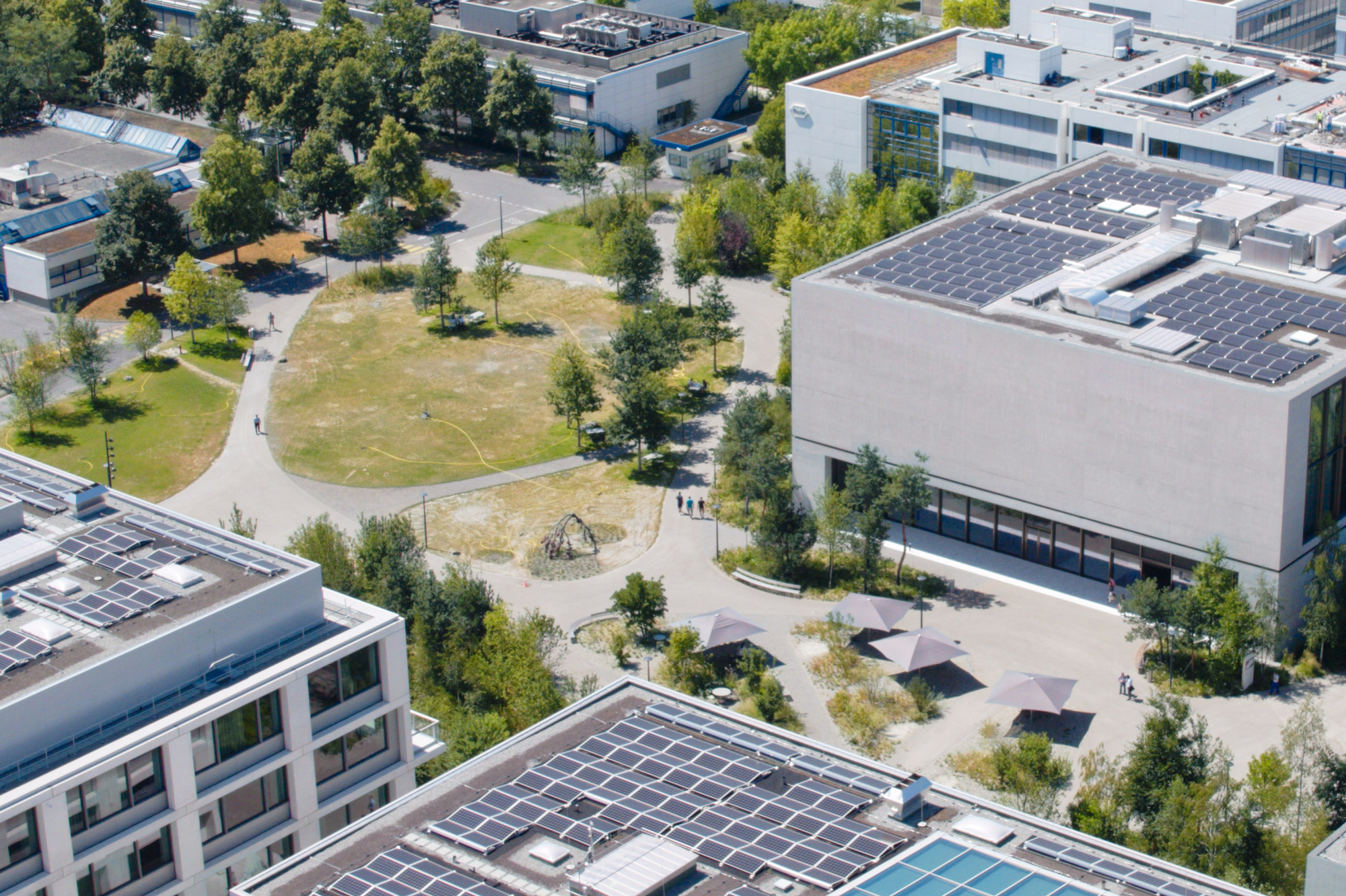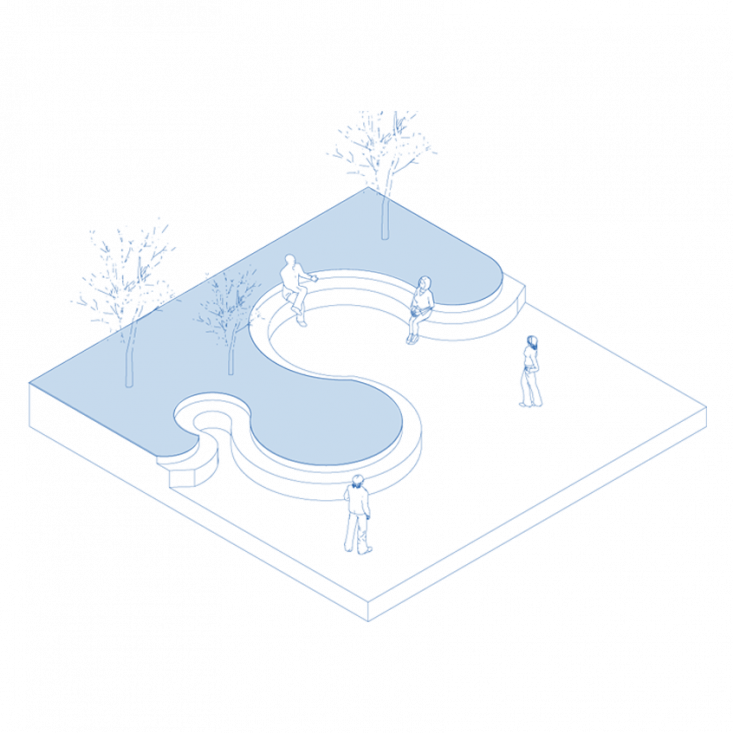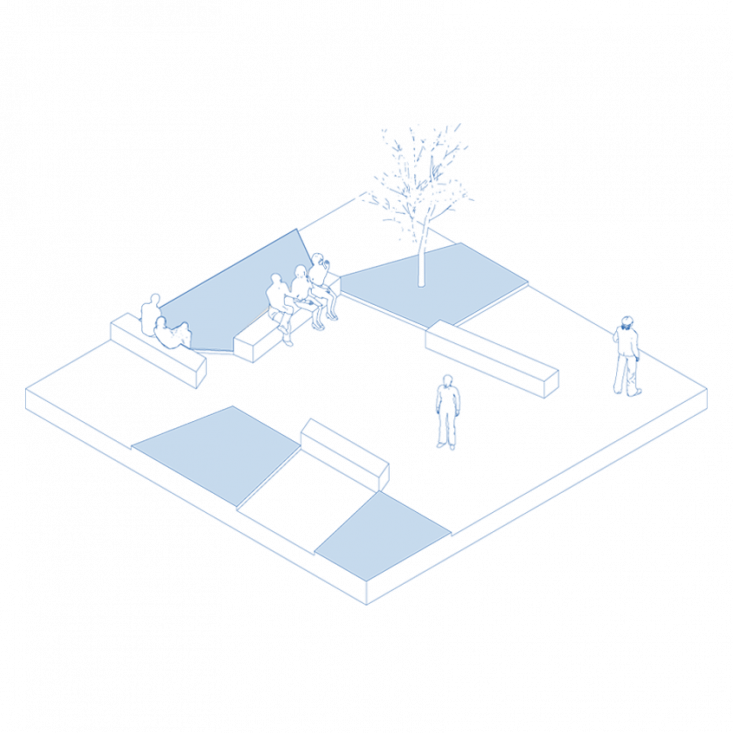
“The form is mechanic when on any given material we impress a predetermined form not necessarily arising out of the properties of the material... The organic form, on the other hand, is innate, it shapes as it develops itself from within…”Samuel Taylor Coleridge - Poet

The form of movement
Shapes should relate to body movement and proportions since the sensation of mobility is an important element to experiencing the landscape. Transform the traditional promenade into a dynamic compositional element, a vaguely organic entity that both separates and connects diverse environments.
- For pathways, create a route that follows the grade, using clean elegant lines to provide the most direct and comfortable route.
- For open spaces, it is possible to use different geometries with clean lines and long extensions to create diverse environments.
- Use angular formal theme clean lines with long extensions to create environments.
- or a rectilinear composition, if it is more appropriate to the context.
Don’t
-

Avoid designing a path that runs against the grade, as it results in unnecessary land disturbance, or one that has a complex geometric pattern.
-

Don't use unnecessary elements or artificial complex geometries.
-

Don’t design fragmented outdoor spaces.
-

Avoid non-rectilinear shapes at the edges of green areas.
Key to Movement and organic shapes
- Balance the rigid shapes of buildings with organic landscapes in between.
- Design shapes that relate to body movement, proportions and are adapted to the topography.
- Don’t use unnecessary elements, design complex compositions or too fragmented outdoor spaces.